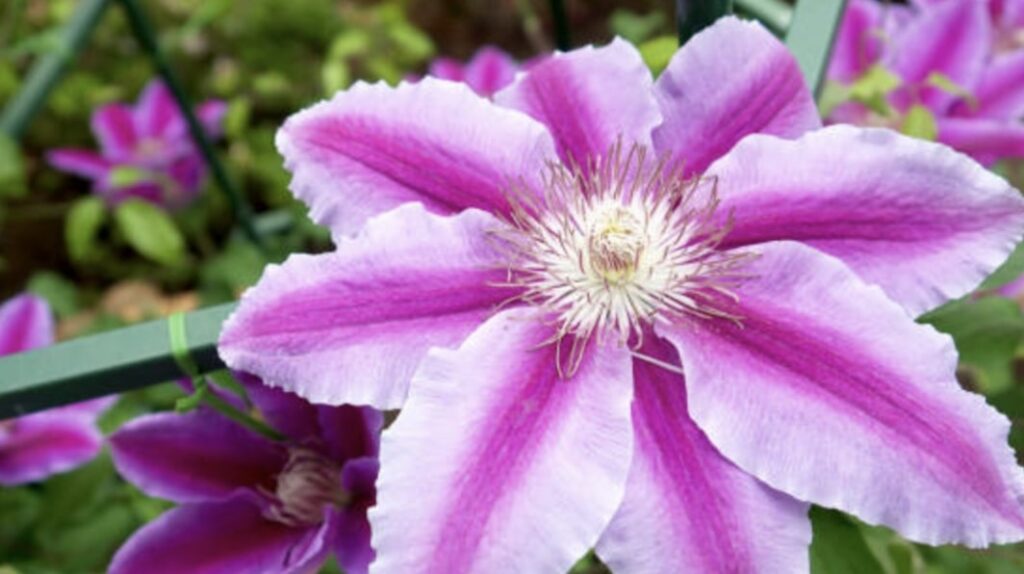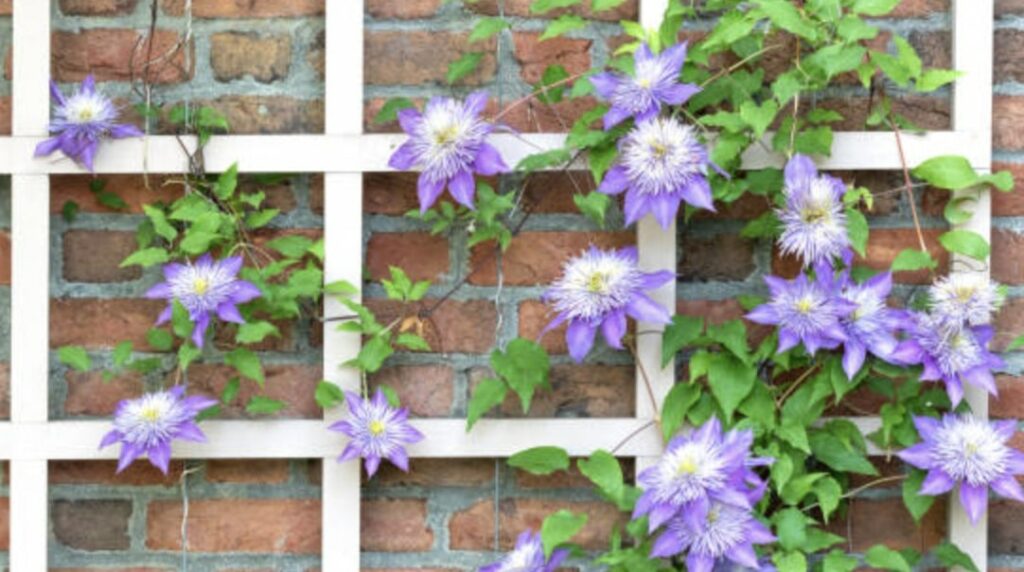Clematis is a genus of majestic plants with large, mostly purple blossoms growing in lovely trailing vines. It’s one of the favorites of many gardeners and flower enthusiasts.
So that they will grow beautiful and lively in your yard, you have to know how to plant and take care of them.
And this is what our guide here is for. We’ll now take you through the things you need to know from planting to pruning these flowers.
Growing Clematis Flowering Vines


Clematis needs six hours of full morning sun from spring through fall. Its soil, however, needs to be evenly moist and cool, unlike other types of flowering plants.
In order to achieve this, you can place mulch on the soil to help it retain moisture. Alternatively, you can plant ground cover or light perennial plants around the clematis.
The soil has to be fertile and well-drained and the space not crowded. Furthermore, it’s ideal to first mix some compost into the soil before planting these vine flowers.
Also, you will need to support these vines as they grow. For smaller clematis plants that range from 2 to 5 feet, use a pole structure.
Meanwhile, for larger ones that can reach up to 12 feet, you would have to use an arbor to give them space or plant them along a fence or trellis.
As with watering, these plants require about 2.5 cm depth of water every week. If the climate is warm and dry, you have to water them more deeply.
A lot of people want to grow clematis plants in a potted container too. This is fine so long as they get the right sunlight, water, and soil requirements.
Other Care Tips for Clematis


To prevent the vines from drying up, remember to replenish the mulch each spring. If not, you’d have to mist or water the plants so they’ll survive.
There can also be conditions and insects that harm the plants. One of these is clematis wilt caused by a fungus that cuts off the plant’s water supply.
The plant will droop and die eventually if left without treatment.
It can also be affected by mildew if you’ve overwatered it and there’s not much air circulation. Plus, insects like spider mites and aphids hinder the plant’s growth and cause marks on the flowers or leaves.
As long as you follow our tips in the previous section, your plants should be fine. But if you notice any pest infestation, you can use neem or insecticidal oil on them or spray them with a gentle, homemade mixture made of three tablespoons of dish soap and a gallon of water.
Pruning Clematis Flowers


Each year, clematis plants have to be pruned to keep them neat and encourage new flower growth. To do this, carefully pinch or cut out leaves and flowers that have wilted or withered.
But bear in mind that the kind and manner of pruning differs based on the clematis varieties you have in your garden.
Early spring bloomers should only be pruned as needed. After their flowers have bloomed with wonderful colors, you can remove their dead wood and leaves to keep the plants neat.
Whereas mid-spring and large bloomers have to be trimmed to their top blossoms during late winter or early spring. This avoids it from becoming bulky and unable to support itself.
And lastly, late-spring bloomers can be cut back two or three feet to the ground during late winter or early spring, making them ready again for the next blooming season.



